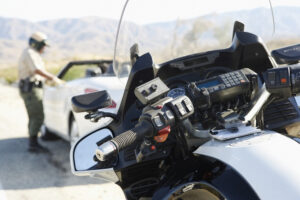When you park your pickup truck or automobile you should not have to chain it to a post to keep it from backing over you. That should be Rule #1 for motor vehicle manufacturers. Apparently, DaimlerChrysler didn’t realize how important a secure Park in its transmissions is. After a $55 Million Verdict the company may finally correct the problem.
A California-state jury today returned a $50 million punitive damages award against DaimlerChrysler for knowing and intentional failure to cure a defect in millions of its vehicles. On March 2, 2007, the same jury found DaimlerChrysler liable for the death of Richard Mraz and returned a verdict of $5.2 million in compensatory damages for Mrs. Mraz and her children.
On April 13, 2004, Mr. Mraz suffered fatal head injuries when the 1992 Dodge Dakota pickup truck he had been driving at his work site, the San Pedro/Long Beach Maritime Terminal, ran him over after he exited the vehicle believing it was in park. The jury found that a defect in the Dodge Dakota’s automatic transmission, called a park-to-reverse defect, played a substantial factor in Mr. Mraz’s death, and that DaimlerChrysler was negligent in the design of the vehicle, for failing to warn of the defect, and then for failing to adequately recall or retrofit the vehicle.
The evidence presented at trial included that DaimlerChrysler had received well over a thousand park-to-reverse complaints, including complaints with 1988 through 2003 Dodge Dakotas, certain 1988 through 2006 Dodge Rams, and certain 1993 through 2004 Jeep Grand Cherokees, over a period spanning more than a decade before Mr. Mraz was killed. These complaints were based on same common defect. Senior management at DaimlerChrysler, however, failed to investigate the full extent of the problem out of fear it could expose the corporation to liability for injuries that had already occurred and it would require a massive recall.
Plaintiffs’ counsel introduced evidence that the defect could have been remedied with corrective action, which would have meant conceding a safety-related defect in much of DaimlerChrysler’s fleet. Faced with this expensive prospect, DaimlerChrysler never had its engineers conduct the “root cause analysis,” or utilize the type of design failure mode effects analysis required as vehicle designs change — which would have quickly isolated the failure in its design and identified a proper fix.
When you park your pickup truck or automobile you should not have to chain it to a post to keep it from backing over you. That should be Rule #1 for motor vehicle manufacturers. Apparently, Daimler Chrysler didn’t realize how important a secure Park in its transmissions is. After a $55 Million Verdict the company may finally correct the problem.
A California-state jury today returned a $50 million punitive damages award against DaimlerChrysler for knowing and intentional failure to cure a defect in millions of its vehicles. On March 2, 2007, the same jury found DaimlerChrysler liable for the death of Richard Mraz and returned a verdict of $5.2 million in compensatory damages for Mrs. Mraz and her children.
On April 13, 2004, Mr. Mraz suffered fatal head injuries when the 1992 Dodge Dakota pickup truck he had been driving at his work site, the San Pedro/Long Beach Maritime Terminal, ran him over after he exited the vehicle believing it was in park. The jury found that a defect in the Dodge Dakota’s automatic transmission, called a park-to-reverse defect, played a substantial factor in Mr. Mraz’s death, and that DaimlerChrysler was negligent in the design of the vehicle, for failing to warn of the defect, and then for failing to adequately recall or retrofit the vehicle.
The evidence presented at trial included that DaimlerChrysler had received well over a thousand park-to-reverse complaints, including complaints with 1988 through 2003 Dodge Dakotas, certain 1988 through 2006 Dodge Rams, and certain 1993 through 2004 Jeep Grand Cherokees, over a period spanning more than a decade before Mr. Mraz was killed. These complaints were based on same common defect. Senior management at DaimlerChrysler, however, failed to investigate the full extent of the problem out of fear it could expose the corporation to liability for injuries that had already occurred and it would require a massive recall.
Plaintiffs’ counsel introduced evidence that the defect could have been remedied with corrective action, which would have meant conceding a safety-related defect in much of DaimlerChrysler’s fleet. Faced with this expensive prospect, DaimlerChrysler never had its engineers conduct the “root cause analysis,” or utilize the type of design failure mode effects analysis required as vehicle designs change — which would have quickly isolated the failure in its design and identified a proper fix.

The Legal Examiner and our Affiliate Network strive to be the place you look to for news, context, and more, wherever your life intersects with the law.













Comments for this article are closed.